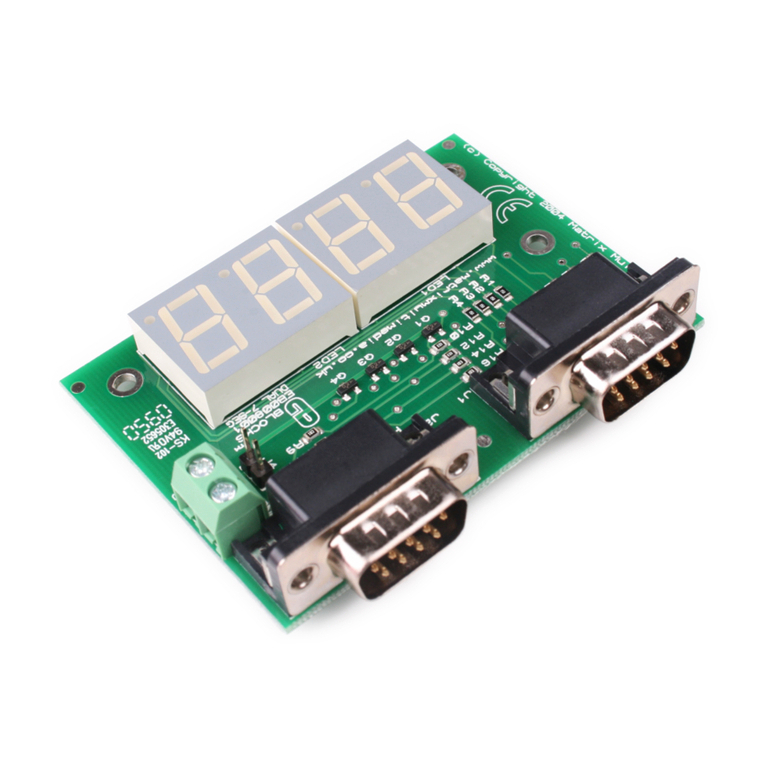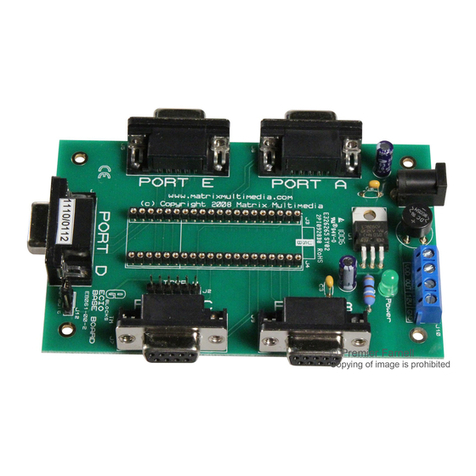
Copyright © 2014 Matrix Technology Solutions Ltd4
General information
2. Block schematic
3. Support devices
Currently mLoader and the EB006V9 support the
following PICmicro devices:
12F Devices
PIC12F609, PIC12F615, PIC12F617, PIC12F629, PIC12F635, PIC12F675,
PIC12F683, PIC12F752
16F Devices
PIC16F1516, PIC16F1517, PIC16F1518, PIC16F1519, PIC16F1526,
PIC16F1526, PIC16F1782, PIC16F1783, PIC16F1823, PIC16F1824,
PIC16F1825, PIC16F1826, PIC16F1827, PIC16F1828, PIC16F1829,
PIC16F1847, PIC16F1933, PIC16F1934, PIC16F1936, PIC16F1937,
PIC16F1938, PIC16F1939, PIC16F1946, PIC16F1947, PIC16F610,
PIC16F616, PIC16F627A, PIC16F627, PIC16F628A, PIC16F628,
PIC16F630, PIC16F631, PIC16F636, PIC16F639, PIC16F648A,
PIC16F676, PIC16F677, PIC16F684, PIC16F685, PIC16F687, PIC16F688,
PIC16F689, PIC16F690, PIC16F72, PIC16F720, PIC16F721, PIC16F737,
PIC16F73, PIC16F747, PIC16F74, PIC16F767, PIC16F76, PIC16F777,
PIC16F785, PIC16F77, PIC16F818, PIC16F819, PIC16F84A,, PIC16F870,
PIC16F871, PIC16F872, PIC16F873A, PIC16F873, PIC16F874A,
PIC16F874, PIC16F876A, PIC16F876, PIC16F877A, PIC16F877,
PIC16F87, PIC16F88, PIC16F882, PIC16F883, PIC16F884, PIC16F886,
PIC16F887, PIC16F913, PIC16F914, PIC16F916, PIC16F917, PIC16F946
18F Devices
PIC18F242, PIC18F248, PIC18F252, PIC18F258, PIC18F442, PIC18F448,
PIC18F452, PIC18F458, PIC18F1220, PIC18F1230, PIC18F1231,
PIC18F1320, PIC18F1330, PIC18F1331, PIC18F13K50, PIC18F14K50,
PIC18F2220, PIC18F2221, PIC18F2320, PIC18F2321, PIC18F2331,
PIC18F23K20, PIC18F23K22, PIC18F2410, PIC18F2420, PIC18F2423,
PIC18F2431, PIC18F2439, PIC18F2450, PIC18F2455, PIC18F2458,
PIC18F2480, PIC18F24K20, PIC18F24K22, PIC18F24K50, PIC18F2510,
PIC18F2515, PIC18F2520, PIC18F2523, PIC18F2525, PIC18F2539,
PIC18F2550, PIC18F2553, PIC18F2580, PIC18F2585, PIC18F25K20,
PIC18F25K22, PIC18F2610, PIC18F2620, PIC18F2680, PIC18F2682,
PIC18F2685, PIC18F4220, PIC18F4221, PIC18F4320, PIC18F4321,
PIC18F4331, PIC18F43K20, PIC18F43K22, PIC18F4410, PIC18F4420,
PIC18F4423, PIC18F4431, PIC18F4439, PIC18F4450, PIC18F4455,
PIC18F4458, PIC18F4480, PIC18F4510, PIC18F4515, PIC18F4520,
PIC18F4523, PIC18F4525, PIC18F4539, PIC18F4550, PIC18F4553,
PIC18F4580, PIC18F4585, PIC18F4586, PIC18F45K20, PIC18F45K22,
PPIC18F4610, PIC18F4620, PIC18F4680, PIC18F4681, PIC18F4682,
PIC18F4685, PIC18F46K20, PIC18F46K22





























